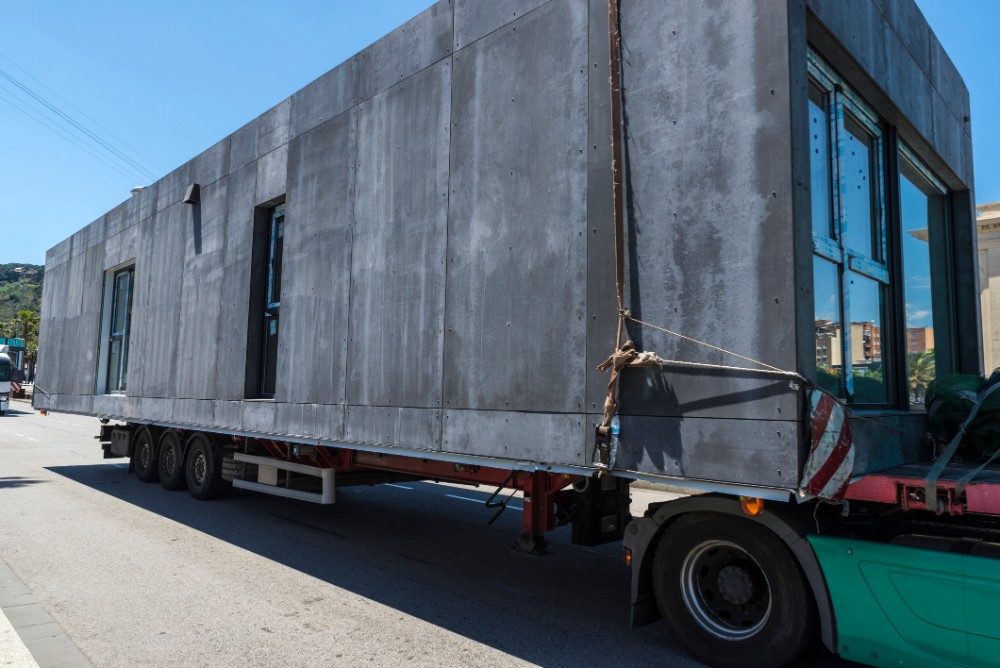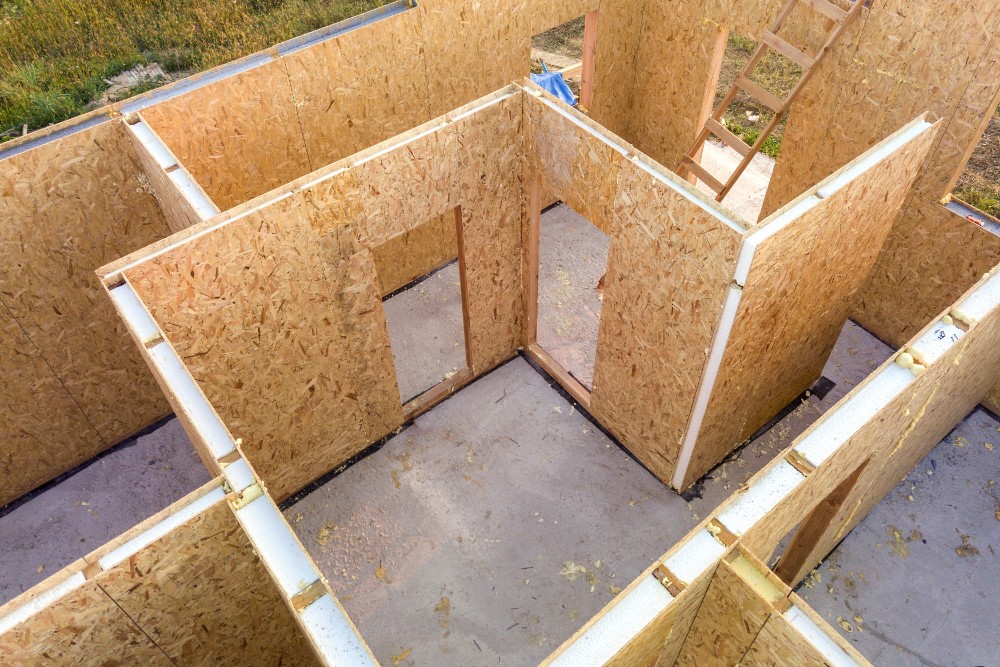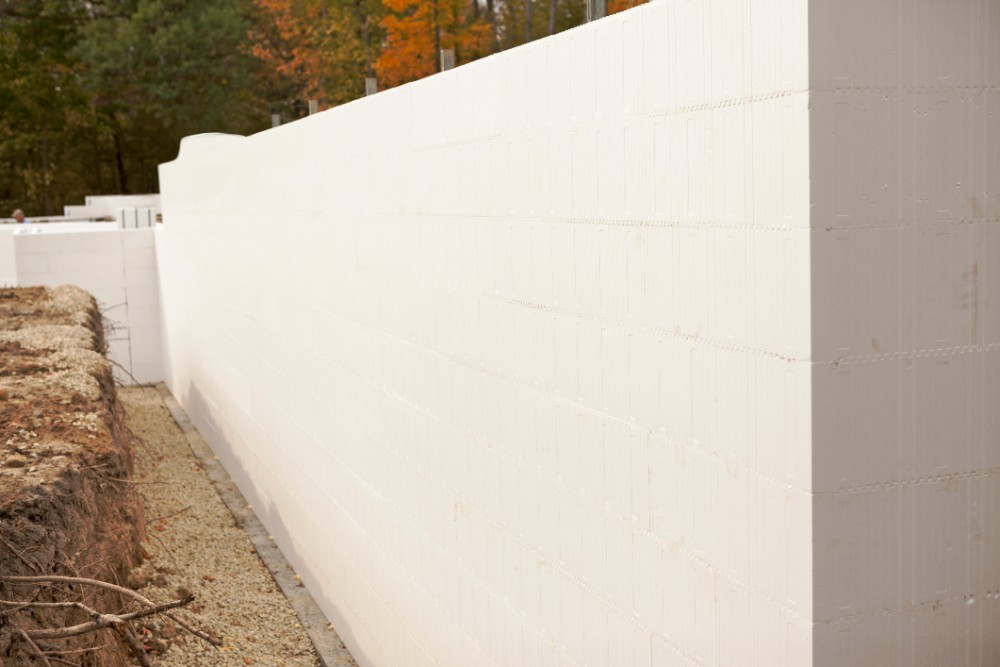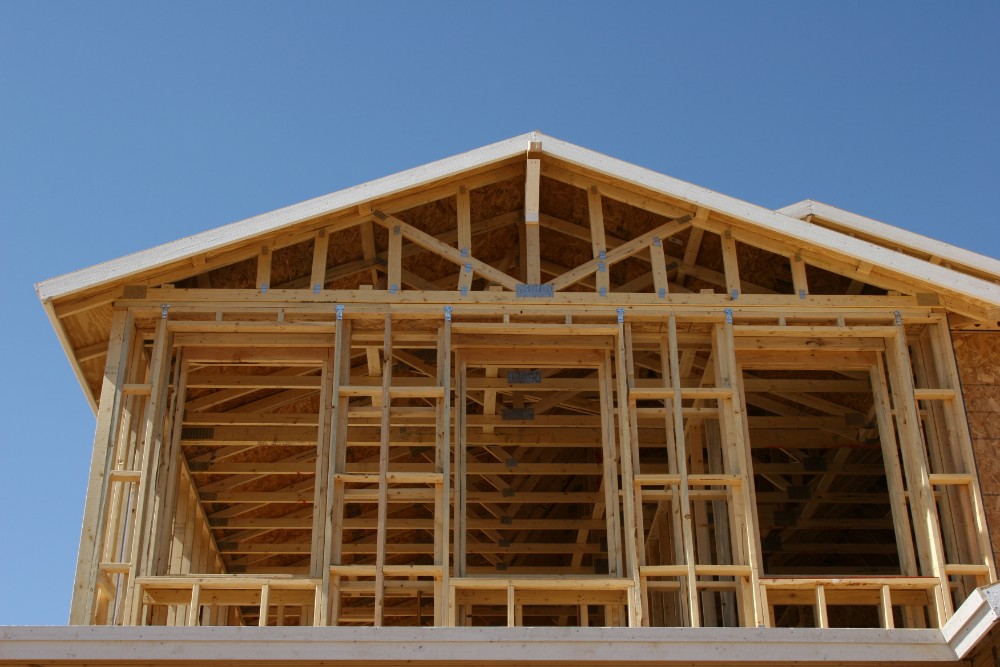Stick built vs SIP vs modular vs concrete ICF
Most often choice between different construction types is on architects. Some do a better job of discussing options with clients or builders, others not so much. While all types of construction offer acceptable performance, their cost is different, time required is different and all of them have some upsides and downsides that we are going to explore. Most investors (future homeowners) request home built using technology they see in their neighborhood. This approach has benefit of doing what is proven in the specific geographical area, but lack of discussion of the options available potentially eliminates savings on materials, efficiency increases and implementation of the latest technologies and recommendations.
Most common construction type in the US is site stick built, site built home. Dimensional lumber is cut and nailed together at the jobsite. After walls are nailed together they are raised and secured in place. Whole house is built this way. Experienced framers can complete this process efficiently. Less experienced framers can make mistakes that result in walls not being plumb, floors not being level and insufficient or wrong fasteners being used. It is not always possible to confirm that everything is fastened properly after framing is done. When done properly, this method results in a sturdy, reliable structure that will have long service life. Biggest downside of this method is reliance on the framers. If person is not skilled enough to inspect everything while it is being built it is possible that not all connections are done as designed.

Modular manufactured homes resemble stick built construction. Instead of using dimensional lumber and being built on site, sections of the home are built using the same method in the manufacturing plant. Home sections are then delivered to the site and assembled. While this process should result in better quality than stick built structure modular homes often perform substandard. It is very important to research the manufacturer of the home. Same as stick built homes, once manufactured homes are assembled it is not possible to inspect framing, fasteners and most structural elements. Customers rely on the manufacturer’s reputation to ensure quality of construction. Some of the manufacturers are meeting bare minimum of the standards that are not enough to ensure long lasting structure. Furthermore, modular home manufacturers offer homes across the country and across all climate zones and not all of them adjust their designs for climate zone 7 where we reside. As a result, structure might not be able to sustain snow loads, they would not be braced properly, air infiltration could be above designed levels etc. There is a reason why lots of manufactured homes are priced well below the price of stick built home. Part are savings due to mass production in controlled facility, but part of the reason are low standards that will be reflected through the life of the structure.

SIP (Structural Insulated Panels) construction is representing a smaller percentage of houses built, but is gaining its share rapidly. Structural Insulated Panels are wall assemblies consisting of two sheets of structural panel (OSB and/or plywood) with EPS foam sandwiched between them. Panels with 4″ or 6″ of foam are typically used for wall assemblies and panels thicker than 12″ can be used for roofs. Most manufacturers will pre cut SIP panels in which case the construction process goes lightning fast. Wall panels typically come in 4′ widths and can be handled by hand by a crew of three carpenters. Important considerations with SIP panels are ratings of the panels. Some manufacturers do more intensive testing than others and some have better documentation accompanying panels than others. Structures built with SIP panels are very tight and very energy efficient. HRV (heat recovery ventilators) is highly recommended and in most areas code required, to provide ventilation and fresh air. They are comfortable and the interior air quality is good. Concerns with SIP panels are regarding their flammability. EPS foam is very flammable and some manufacturers offer panels with foam that is treated with flame retarders. Sip panels by themself have limited ability to support cabinets as there might not be 2×6 framing members to attach to. Panels’ skin can not be cut (exceptions are small penetrations like electrical outlets) and replaced and almost no plumbing can be run through the panel. Panels come with chases for electrical wiring and it is possible to field add additional chases for a wiring. Important consideration with SIP panels is proper sealing against water vapor moving through the panels. Vapor trapped in the walls and especially roof can result in accelerated deterioration of OSB sheathing. Loose roof shingles are one of the first signs of vapor being trapped and condensing on the exterior of the panels. Unless approved by the engineer, SIP panel sheeting can not be replaced without replacing the whole panel. In case of structural damage it is not as easy to repair structure as it is with stick framed buildings. If SIP panels are used for roof, it is good practice not to use ice and water shield (self adhesive membrane) all the way to the ridge. Leave a foot or two on each side of ridge without membrane and cover it with roofing paper. If any moisture makes it through the sheathing it will evaporate through the roofing paper without accumulating and causing damage.

ICF (Insulated Concrete Forms) are forms made of EPS foam. They stack together, rebar is installed as specified in the drawings and then concrete is being poured into them. There is no stripping of the forms and 5″ of insulation they offer is often sufficient. Sometimes forms are used for foundation and then the house is framed on top of them or the whole house can be “built” with them and then foundation, walls and roof are filled with concrete. Concrete houses built like this result in reduced heating costs. Besides the insulation value of the forms, walls have sufficient mass to absorb warmth during the day and release it during the night resulting in 15% reduction in heating cost. These houses are very tight and also require HRV ventilators. Forms come with embedded plastic strips that are used to attach drywall. Flammability of the forms is one of the considerations and some of the forms are treated with flame retarder making them less flammable. When used below the grade forms have to be protected from damage before backfilling. Waterproofing in the form of self adhesive waterproofing membranes are most often used. Forms are sensitive to the UV radiation and have to be protected from the sunlight. Increased lumber cost makes concrete homes more economical. Any adjustment and alterations are not as easy. Fast pace at which ICF forms are put together makes them a good choice for fast paced construction. Additional benefit for foundation walls is that there might not be need for any additional insulation below grade. EPS has very low permeability (ability to transfer moisture) and it might take several years for concrete to stabilize its moisture levels after it has been poured.


